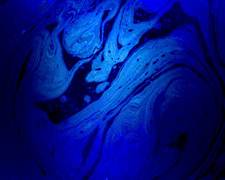How pregnancy tests could help find oil spills


Cambridge Consultants is applying the same technology that is being used for applications such as pregnancy tests or fertility monitors to early warning systems that provide alerts about oil leaks at sea.
The idea is pretty simple: oil is naturally fluorescent, which means that monitors looking for this quality might be able to pick up the presence of even trace amounts of oil in (or on) water.
Most leaks aren't detected until they rise to the surface, which makes for more environmental damage.
The new technology being tested by Cambridge Consultants in England and Massachusetts, however, could be installed along sub-sea pipelines, providing an early warning even in the case of really small leaks.
Right now, other oil detection methods are pretty expensive, relying on long-range radar or scanners installed on aircraft. The new sensors being designed by Cambridge Consultants would allow oil and gas exploration companies to install sensors much more cost effectively.
"An oil spill 'alarm system' of sensors distributed across the seabed - or a series of oil platforms - is going to need a different design solution from a system for scanning a harbor or stretch of coastline from a distance to track oil spills that might be heading for the shore," says Frances Metcalfe, associate director of oil and gas solutions, for Cambridge Consultants.
The first phase of the testing for the technology is complete, and Cambridge Consultants is now starting to demonstrate the solution for potential commercial applications.